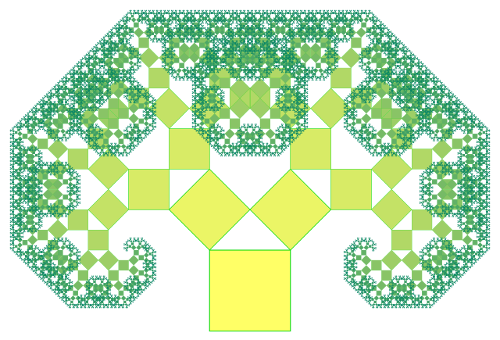Draw a square and perch two smaller squares above it, forming a right triangle:

Now perch still smaller squares upon these, and continue the pattern recursively:

Charmingly, if you keep this up you’ll grow a tree:

It was dubbed the Pythagoras tree by Albert Bosman, the Dutch mathematics teacher who discovered the figure in 1942. (Each trio of squares demonstrates the Pythagorean theorem.)
At first it looks as though the tree must grow without bound, but in fact it’s admirably tidy: Because the squares eventually begin to overlap one another, a tree sprouted from a unit square will confine itself to a rectangle measuring 6 by 4.
